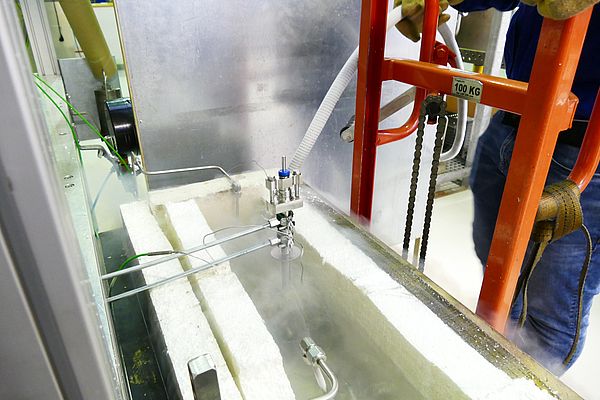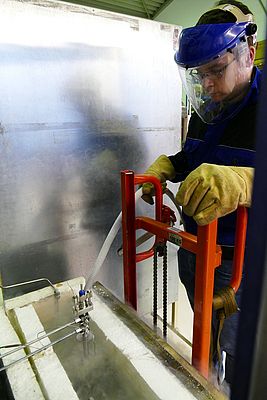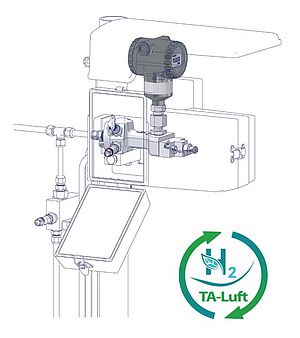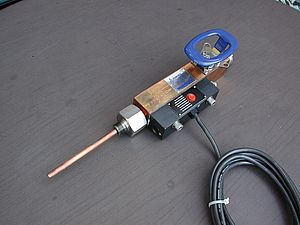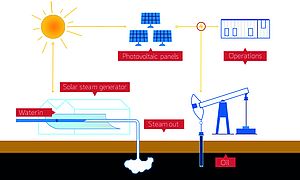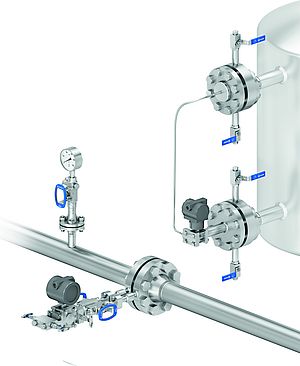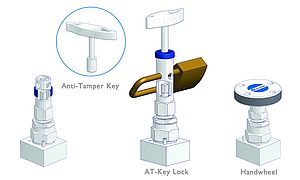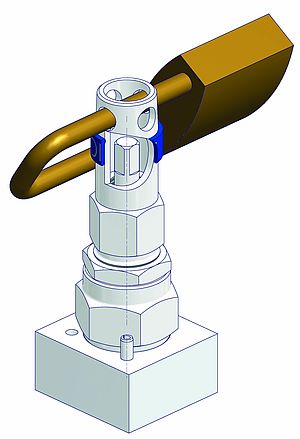Cryogenic valves and other media are susceptible to extreme temperatures. Leakage is dangerous, threatening worker and plant safety. It is also expensive, considering the high cost of converting gases into cryogens. Standard valves expand and contract at varying rates when exposed to extreme temperatures. This expansion and contraction cause breaks in the seal. The result of these breaks is undesired leakage. AS-Schneider offers the solution to this problem: cryogenic valves. These valves remain functional in temperatures as low as -320°F (-196°C).
The manufacturer has to produce cryogenic valves using the right materials. Few materials can cope with cryogenic temperatures. These chosen materials can withstand the pressure at these temperatures, especially when it comes to the parts of the valve that are in direct contact with the fluid and the temperature.
Where are cryogenic valves used?
Operators use cryogenic valves in the production of liquefied gases. They also use the valves for the transport and storage of these gases. The gases include liquid nitrogen, argon, oxygen, hydrogen, natural gas, and helium. In the liquefied condition, the gases are a lot easier to handle. One big part in the use spectrum for cryogenic valves is the LNG application. Transport ships use natural gas for fuel. They prefer LNG because space is rarely available on ships. The operators had to reduce the volume to keep the natural gas tanks as small as possible. They did this by liquefying natural gas (LNG, Liquefied Natural Gas).
What are the Challenges of Using Cryogenic Valves?
In some cases, the gas is highly flammable, like natural gas or oxygen. The valve has to perform well in the case of a fire. There is an accumulation of pressure in the routine handling of cryogens. This pressure is due to heat gain from the environment and consequent vapor formation. There needs to be a special consideration in designing the valve/piping system to allow for pressure build-up.
Extreme temperature variations can compromise the safety of the worker and the plant. Each component of the cryogenic valve expands and contracts at different rates. These variances are due to the different material compositions. They also occur as a result of the length of their exposure to the cryogen.
Another big problem when dealing with cryogens is heat gains from the surroundings. These heat gains are the reason why manufacturers insulate valve and piping.
The valve also has to cope with a considerable amount of challenges. For example, the temperatures of liquefied gases go down to -270°C for liquefied helium. Valve function becomes very challenging if the temperature plunges to absolute zero. A cryogenic valve connects the pipeline with the liquid gas to the environment. It does so at ambient temperature. The result can be a temperature difference of up to 300°C between the pipeline and the environment. The temperature difference generates a heat flow from the warm to the cold area. It impairs the correct functioning of the valve. It also decreases the efficiency of the system under extreme circumstances. This situation is of particular concern if ice forms at the warm end.
In cryogenic application, there is deliberate use of this process of passive heating. Manufacturers use this process in sealing the valve stem. They use plastics to seal the stem of conventional valves. These materials cannot withstand the low temperature. The alternative would be a high-performance metallic sealing of two parts, which are in near constant motion, in opposite directions. Metallic sealing would be very expensive and close to impossible. There is a straightforward solution to this problem. The plastics for sealing of the stem can be brought to an area with average temperatures. That means the sealant of the stem has to be far from the fluid. The bonnet is like a pipe. If the fluid is rising, this pipe gets warmed from the outside temperature. When the fluid reaches the stem sealant, it is at ambient temperature and gaseous. The bonnet also prevents the handle from freezing and preventing actuation.
Selecting a valve for cryogenic service
Choosing valves for cryogenic applications can be quite complicated. Buyers have to consider the conditions aboard ships and in plants. Also, the specific nature of low-temperature cryogenic fluids demands specific valve performance. Proper selection ensures plant reliability, protection of equipment, and operational safety. The global LNG market uses two main valve designs:
Triple offset rotary tight isolation valves
These offsets allow the valve to operate open and closed, with minimal rubbing and friction in their operation. It also uses stem torque to make the valve more sealable. Trapped cavities are one of the challenges of LNG storage. In these cavities, the liquid can expand over 600 times explosively. The triple rotary tight isolation valve eliminates this challenge.
Single and dual flapper check valves
These valves are critical components in liquefaction plants. They prevent damage from flow reversal. Material and sizing are essential considerations because cryogenic valves are expensive. The results of an incorrect valve can be detrimental.
How can engineers ensure the tightness of cryogenic valves?
When one contemplates the cost of making a gas into a cryogen in the first place, leakage is costly. It is also dangerous. One big problem with cryogenics is the potential for seat leakage. Buyers often underestimate the radial and linear growth of the stem as it relates to the body. If buyers select the correct valve, they can avoid the problems mentioned above.
The use of cryogenic valves made of stainless-steel material is recommended. This material copes well with the temperature gradient during operation with liquefied gases. The cryogenic valves should have the right sealing materials, for a high tightness up to 100 bars. Also, extended bonnet is an essential feature. It determines the tightness of the stem sealant.
Keep in mind that suppliers test cryogenic valves down to -196°Celsius. These tests are in keeping with specific international standards. AS-Schneider tests its cryogenic valves in liquid nitrogen with helium as the test medium.
What should engineers pay attention to during assembly of cryogenic valves?
The cleanliness of the valve is essential in the cryogenic application. Grease or lubricants get very hard at low temperatures. For example, if they get between the ball and the seats of a ball valve, there is no flat contact
and sealant gets leaky. Thus, the manufacturer has to clean and degrease the valve before use. The buyers also have a responsibility for the cleanliness of the valve. They have to ensure that the installers assemble the valve with clean tools. All connections and piping parts should also be free of pollution of any kind.
AS-Schneider manufactures robust cryogenic valves for use in extreme conditions in the chemical and petrochemical industries. Their high performance ensures the safety of plants and workers.


